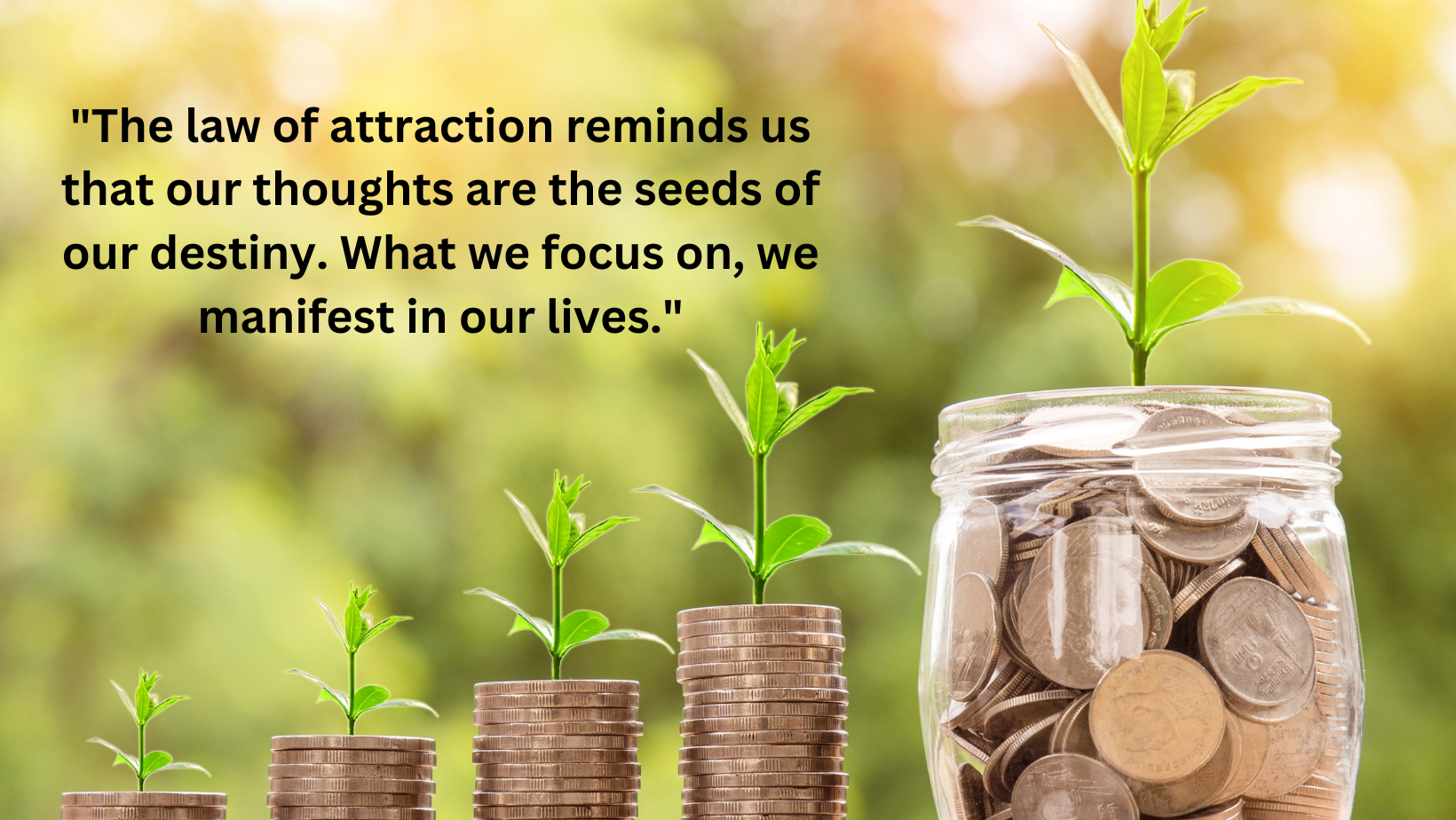The Science Behind the Law of Attraction:
- 7 Views
- kevinchde
- April 27, 2023
- Personal development
Exploring the Connection Between Thoughts, Emotions, and Manifestation
What is the Law of Attraction:

While the Law of Attraction is not a scientifically proven concept, there is growing evidence to suggest that our thoughts and emotions can profoundly impact our lives.
The Law of Attraction is a metaphysical concept suggesting that the thoughts and feelings you put into the universe will attract like energy back to you.
This means that if you focus on positive thoughts and emotions, you will attract positive experiences and outcomes into your life, whereas negative thoughts and emotions will attract negative experiences and outcomes.
The Law of Attraction holds that everything is energy and vibrates at different frequencies. Focusing on a desire or objective sends forth a vibration that matches it. The Law of Attraction then draws people, circumstances, and events that match that vibration to you.
The Law of Attraction is not scientifically established, yet many people have successfully applied its principles to their lives. However, positive thinking alone won’t help you reach your objectives and dreams.
So, what is the science behind the Law of Attraction?
Here are some facts about the science behind the Law of Attraction:
- Our thoughts and emotions can change the structure of our brains. Studies have found that meditation and visualization techniques can increase the amount of gray matter in the brain, which is associated with positive emotions and increased cognitive function. (Source: Harvard Health Publishing)
- Positive emotions such as gratitude and happiness can have a range of benefits for our health and well-being. Gratitude has been linked to increased happiness, better sleep, and reduced symptoms of depression and anxiety. Happiness, in turn, has been linked to a stronger immune system and a lower risk of chronic diseases such as heart disease and diabetes. (Sources: Harvard Health Publishing, Mayo Clinic)
- The Law of Attraction is based on the idea that everything in the universe is made up of energy, and that this energy vibrates at different frequencies. When we focus our thoughts and emotions on a particular desire or goal, we send out a vibration that matches that desire or goal. (Source: The Secret)
- The Law of Attraction is not a magic pill that will instantly transform our lives. Action is also necessary to achieve our goals and make our dreams a reality. However, by aligning our thoughts, emotions, and actions with our desires and goals, we can create a powerful force to help us manifest the life we truly want. (Source: Forbes)
- The Law of Attraction can be practiced through techniques such as visualization, affirmations, and gratitude journaling. Focusing on positive emotions and feelings can create a positive emotional state that aligns with our desires and goals. (Sources: MindValley, Law of Attraction Magazine)
Key points:
The Law of Attraction is founded on the premise that everything is energy and vibrates at different frequencies. We put forth a frequency that fits our desires and goals when we focus on them.
Thoughts and emotions can alter brain structure and body cells, according to research. Meditation and visualization enhance brain grey matter, which is linked to pleasant emotions and cognitive function.
Studies also show that positive emotions like appreciation and happiness might improve our health. Gratitude can boost happiness, sleep, and depression and anxiety symptoms. Happiness also boosts the immune system and lowers the risk of chronic diseases like heart disease and diabetes.
How to practice: Step-by-step guide
Start here if you’re new to the Law of Attraction:
First, make a clear purpose for what you wish to manifest. This could be a new career, relationship, health, or wealth.
Secondly, Visualize your intention: Imagine achieving it after setting it. Close your eyes and visualize the feelings of reaching your goal.
Next, use positive affirmations to reinforce your objective and visualize success. Repeat affirmations like “I am successful and fulfilled in my new job” or “I attract opportunities that align with my values and passions” to find a new job.
Then, Gratitude: Appreciate what you have. This can make you happier and more open to abundance.
Finally, act on your aim. Networking, job applications, and health and financial improvements are examples. The Law of Attraction requires action to obtain your goals.
Remember, the Law of Attraction requires practice. Despite setbacks, you must be positive and focused on your goals. Staying constant in your practice creates a powerful energy that can help you manifest the life you want.
Tips for Better Practice:
Exercise can help you apply the law of attraction. Ideas include:
Journaling: Writing down your ideas might help you identify your mental patterns and change unfavorable ones.
Mood board: Make a visual reminder to be happy, motivated, and focused.
Acceptance: Instead of complaining about the present, accept it. You’ll still work towards a brighter future, but you won’t waste time wishing things were otherwise.
If you’re self-critical, try positive self-talk every day. This may become easier and make it difficult to stay negative.
Potential Pitfalls
Optimists achieve exceptional achievements because their optimistic outlook encourages proactive behavior. Optimists’ attitudes don’t alter anything—it’s their behavior that does.
To influence behavior, beliefs need:
Goals
Mindfulness
Commitment Motivation
Timelines
Challenges
Support
We can control our reactions, but not our surroundings. Thus, the law of attraction can foster resilience by instilling optimism and proactivity, but it should not be used to shame oneself.


